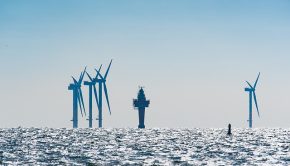As wind energy prices plunge, Xcel refunds customers who paid a premium –
As wind energy prices plunge, Xcel refunds customers who paid a premium –
Xcel Energy recently refunded customers who volunteered to pay extra to support wind energy, which is now among the cheapest sources of electricity.
As prices continue to fall, a program launched by Xcel Energy in 2003 that helped subsidize wind power is wrapping up, with money left over that will be sent back to participants.
Xcel recently adjusted and credited the bills of about 70,000 Windsource subscribers in Minnesota. The 17-year-old program has allowed customers to offset their electricity consumption with wind power, with a typical customer in Minnesota recently paying about $9 extra per month.
The bill credits, which varied based on customers’ subscription levels, are mainly a result of historic low prices for wind power from June 2018 and April 2020, when prices dropped below a fixed rate the utility and regulators established for the program. Xcel distributed $6 million to subscribers this fall, and at least one more refund is expected next year before the program ends.
Windsource was among the country’s first green tariff programs, which provide consumers an option to support clean energy through a slight premium on their bills. As the program grew, Xcel certified 20 wind projects to generate energy for the program. When deficits emerge between production and sales, the utility buys renewable energy credits to make up the difference.
Customers purchase Windsource in 100-kilowatt-hour installments to cover all or part of their energy consumption. Half of Windsource subscribers offset 100% of their electricity consumption with wind power, Xcel said.
Once a unique offering by a handful of utilities, green tariff pricing programs have grown substantially as interest in clean energy has gone up. Critics have asked why some green pricing programs charge customers significantly more than utilities pay for wind and solar resources.
“What this indicates to me is what has become of green pricing is that in more and more of these programs the underlying logic of charging people more for energy that should cost less cannot persist indefinitely, especially when you have more and more customers signing up,” said Andrew Butts, the founder of the Green Neighbor Challenge, a web portal where customers across the country can find green pricing programs offered by their utilities.
When Windsource began, customers paid a $2 premium per 100 kWh block. As the price of wind power fell, that upcharge was lowered to $1 per block. Even that fee proved to be excessive in recent years, which prompted the refunds. (The program is required to be revenue-neutral, meaning Xcel cannot earn an additional profit from collecting more than required to obtain the power.)
The economics were part of a nationwide decline in wind energy prices. A decade ago, power purchase agreements with wind developers averaged 7 cents per kWh, according to Lawrence Berkeley National Laboratory’s 2020 Wind Technologies Market Report. Last year, that amount had dropped below 2 cents.
The price decline was in part due to federal tax support, but even unsubsidized wind is now competitive with fossil fuel and solar energy. That’s thanks to a wave of innovation from turbine manufacturers and installers preparing for the expiration of the Production Tax Credit next year, said Beth Soholt, executive director of the clean energy advocacy group Clean Grid Alliance.
More utilities have restructured their green tariff programs to reflect renewable energy and program administration costs, Soholt said. She cited as examples the green tariff programs of the Michigan utilities Consumers Energy and DTE Energy.
Other Minnesota utilities offer green tariff programs based on the Windsource model in which subscribers pay a slight premium to support wind energy. The investor-owned utility Minnesota Power offers Renewable Source, a program that has attracted few subscribers. The generation and transmission cooperative Great River Energy sells Wellspring, a wind green tariff program, through its 28 members. Wellspring has more than 5,200 customers. Neither utility has offered bill credits to subscribers.
Xcel will end Windsource next year and transition customers into a different green tariff program called Renewable Connect that includes wind and solar and has an emphasis on commercial customers. Renewable Connect has a waiting list of more than 400 customers and 3,200 current participants not counting Windsource customers. Xcel predicts a need for an additional 230 megawatts of renewable capacity to meet growing demand.
This article was originally posted on Energy News Network and was republished with permission.








